For the Brave and Diligent Shopper
Lord, this prayer is for the brave and diligent shopper. She walks in. And she never misses a week.
Lord, she is ferociously focused on getting to the pantry.
Looking neither left or right, dismissing the rain, or the cold, or the boiling heat, she makes her way each week through the crowded parking lot.
I pray for her grace, energy, and willpower. I pray that someone or maybe several someones can witness and celebrate her discipline and focus.
And, I pray that others will notice her voyage each and every week. I don’t want to be the only one who sees her gracefully make her way through the crowded shoppers waiting outside the pantry for it to open.
Lord, I know you sent her to lift our hearts: patient, lovely, graceful. She is our inspiration.
I think of her on shopping days when I drive to Albany for extra food. She keeps my own work ethic steady.
And, she lifts my heart.
So, thank you again for sending her.
Amen
You can purchase this latest book about the spiritual journey of hunger at www.thurmangreco.com.
Please check out the YOUTUBE channel show. Renee, our own wizard, loads new episodes on Tuesdays. “Let’s Live with Thurman Greco” is a positive, entertaining series of conversations with local VIPs that I’ve conducted throughout the last 15 years or so. There have been a few intermissions throughout the years, but not many.
My guests enjoy being on the show and many ask to return. One thing we all have in common: we’ve all met each other somehow in Woodstock, NY
AND thank you for reading this article. This blog post, and the others soon to come, celebrate 10 years of Hunger is not a Disease.
Find out more about Thurman at www.thurmangreco.com.
Send me an email at thurmangreco@gmail.com.
Join me on facebook!
Thurman Greco
Healing 1: Serving the Hungry with an Understanding Heart
“You, God, are my God, earnestly I seek you; I thirst for you, my whole being longs for you, in a dry and parched land where there is no water.” – Psalm 63:1
“That person lives in Shandaken. He shouldn’t even be here.”
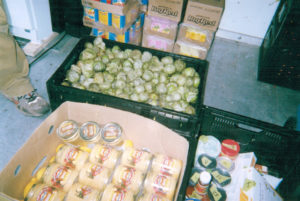
The pantry served shoppers, volunteers, hungry people. Volunteers fed everyone in the line. No exceptions.
Distributing groceries brought forgiveness and healing. Healing was an after thought of forgiveness.
For me, healing required some commitment and thought. Whether or not this was true, questions always arose:
“Am I ready to be healthy?”
“Can I get well if it’s scary?”
“Can I leave the old me aside if it’s necessary for healing?”
“Why am I going through this?”
“What is the meaning of it all?”
These questions could be painful. Healing can be hard on everyone.
The pantry line had massage therapists, Reiki practitioners, medical intuitives, and other healers.
As a healer, I know healing happens on several levels in our lives: physical, mental, spiritual, emotional, mythical. Both healing and getting well were special challenges because many of the people in the hallway, the pantry room, and out in the parking lot didn’t have health care.
While he had his office, Woodstock had Dr. Longmore. After his office closed, things were tough for many. As health care became scarce, everyone became personally involved with the differences between healing and getting well. For some, this was part of the spiritual journey.
Hunger often went beyond a plate of beans or a jar of peanut butter. That’s why food is essential to healing. That’s where homemade soup comes in.
Sharing food in the pantry helped people heal. Fresh vegetables, eggs, and Bread Alone bread offered a healing experience with abundance. As we fed the shoppers, we helped ourselves and each other.
In some cases, the shoppers became the volunteers or the volunteers joined the shoppers. Shoppers came to get food and found they could volunteer. Volunteering changed them. As a person distributed groceries, the volunteer made contact with another person and was able to smile.
Pantry experiences coaxed us out of our own problems. Offering a sense of community gives back so much more.
Do you want to be healed? Healing and feeding are connected.
Sooner or later, we all get sick. Finally, we die.
No one escapes. This truth is harder on hungry people who have no $$$ for health care.
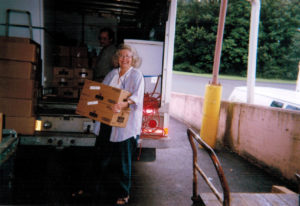
Hungry people are often blamed for their inability to deal with the situation. It’s as if it’s their fault for being down and out in Woodstock. If they lived right, they would be healthier, make more $$$ in their jobs.
If critics stopped and thought about how insufficient nutritious food, improper housing, and inadequate or nonexistent healthcare impacts a person, they might feel differently.
What did it matter that there were no jobs in the area and none of those that came open paid over $8.00 an hour?
Because they were down and out, they must be guilty of something.
They were negative thinkers, lacking faith, and basically lazy. Something.
They were gay, trans, promiscuous, alcoholics. Something.
They were freeloaders, irresponsible, flaky. Something.
Healing and getting well are two different things, acting in different ways. But, whether a person heals, gets well, or both, change happens.
“Do I want to heal?”
“Do I want to be well?”
“What if I come out of this experienced a different person?”
“What if it takes a long time?”
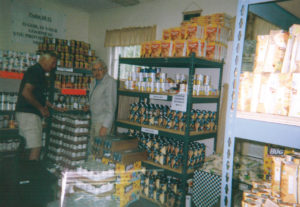
In the midst of this, the pantry offered some normalcy to the shattered lives of hungry people when they took pantry food home to wherever and whatever that was, fixed a meal, and served it to those in the household.
It was supper from the pantry.
Health issues pointed to the spiritual challenges which popped up on the path to the pantry. Healing was on the agenda. We all wanted to get well.
People getting well overcome symptoms. Getting well means doctor’s visits, therapy, pills, creams. These things were simply not an option for pantry shoppers because there was no money.
Symbolic healing occurred in the hallway on pantry days as shoppers and volunteers discussed their diabetes, PTSD, cancer, allergies.
Working and shopping in the pantry was therapy to volunteers and shoppers. These hallway conversations were cheaper than the physical and mental health services they had no money for anyway.
These conversations were essential because talking about a health issue promotes healing. Shared symptoms gave us all support, strength, validity.
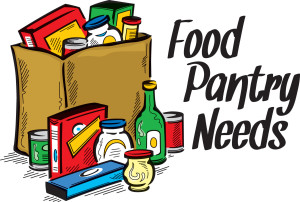
Everyone walking through the door to the pantry, whether a shopper or volunteer, was asked to leave the past behind. This experience was different for everyone. But, think about it, how can we move forward into our new lives if we never give anything up.
For some, giving up the past means letting go of things lost: the job, the home, maybe the family, self-esteem, the car, good health, money, insurance, the pet, anger, or drugs.
As the past disappears, the remaining spiritual baggage weighs less and less. Prejudices become fewer. Fears diminish. We heal!
Some things surrendered were physical, some mental, and some emotional. But, one thing is certain, whatever the category, the experiences all had a spiritual aspect.
Giving and receiving food brought everyone a little peace.
Everyone coming to the pantry heals somehow. The pantry community supports and approves hungry individuals as they climb back on the road to wellness and something offering normalcy.
Nobody just wakes up one day and says “I think I’ll go down to the local food pantry and volunteer.” People spending time in pantries all travel down the path. Healing has signposts along the way.
Some needed physical healing. Volunteers occasionally came to the pantry so ill that they were barely able to make it into the building. When this happened, I stationed them at the Items of Dignity table distributing toilet paper, shampoo, razors. They offered one roll of toilet paper and one other item to each shopper.
 Each week, Deanna slowly walked the two blocks to the pantry and then worked in the hallway a couple of hours while she gathered enough energy to return home.
Each week, Deanna slowly walked the two blocks to the pantry and then worked in the hallway a couple of hours while she gathered enough energy to return home.
“Don’t forget your roll of toilet paper, Judith. We’ve got some hand cream today. Can you use that or would you prefer tooth paste?”
When Deanna finally couldn’t work in the hallway anymore, Rachel gracefully sat at the Items of Dignity table helping shoppers choose their two items. Rachel lived in nearby Mt. Tremper. Her living situation seemed somewhat precarious because every few months she looked for a new place to live. She lived in her car a couple of times.
Thank you for reading this blog post. This is the first food pantry article on healing.
Please forward this article with your preferred social media network. Share it with a friend.
If you are interested in healing, please check out my other blog: www.reflexologyforthespirit.com.
Thanks again.
Thurman Greco
Woodstock, NY
PS: Many programs are now uploaded to YouTube. More are being added weekly. Enjoy!
![]()
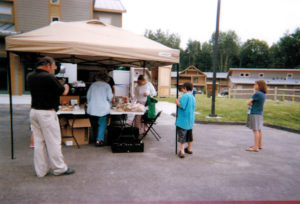

5 Easy Steps to Your Successful Food Drive
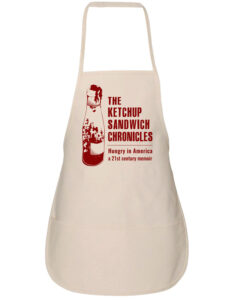
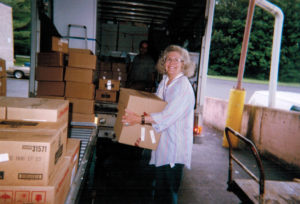
It’s easier than you think.
Step 1:
Choose the food pantry, homeless shelter, school, church, food bank, or soup kitchen to receive the food you collect.
Step 2:
Contact your recipient, and learn what items the hungry people need. Try to be specific. Can they only accept canned food items or can they use frozen and fresh foods? What about pet food?
If they need pet food or food for homeless people, for example, request those items (with specific food item suggestions) at your drive.
Step 3:
Decide how you want to collect the donated food.
The method I prefer is, of course, the one that worked for me several times. I recommend this method:
Gather some large empty grocery bags in good condition.
Attach a letter to each one saying something like:
Dear Neighbor:
“We are having a food drive in this neighborhood. Please fill this bag with food and set it out on your entryway on ………………………….. when it will be picked up between 00:00 and 00:00. Include am and pm to be more specific.
We need the following kinds of food:……………………..
Your donated food will be donated to ……………………………… Thank you for your generosity. If you have any questions, please call…………………………………. Signed…………………………………….”
Set the bags out at every address in the area you selected.
On the appointed date, return to the addresses and pick up the bags of food.
Step 4:
Deliver them to the selected food pantry, homeless shelter, school.
Step 5:
Pat yourself on your back. You did a great job!
My experience with this food drive method is that people respond positively because you give them bags, tell them exactly what food items you need, and return to pick up the food at a specific time on an exact date.
Thank you in advance for all you are doing to feed your neighbors.
Please post this article on your favorite social media network.
Share it with your friends.
Have a wonderful day!
Thurman Greco
www.hungerisnotadisease.com


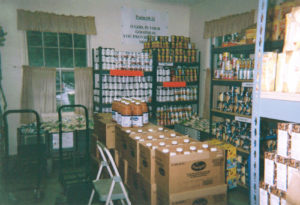
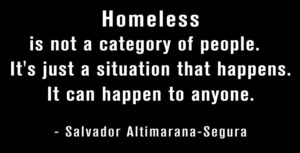





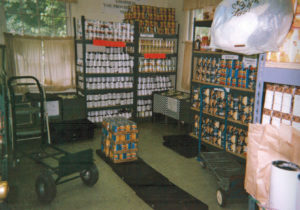

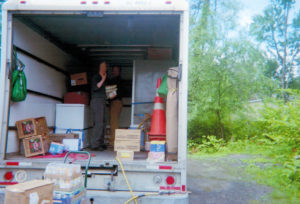
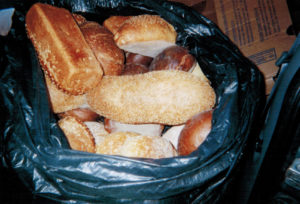

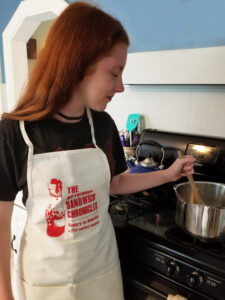 Learn more about hunger and homelessness on YOUTUBE at “Let’s Live with Thurman Greco”
Learn more about hunger and homelessness on YOUTUBE at “Let’s Live with Thurman Greco”





